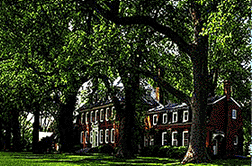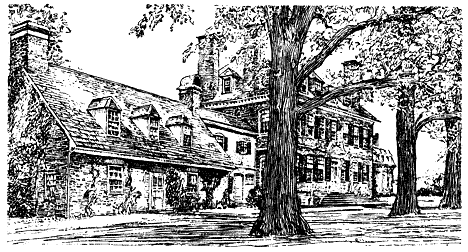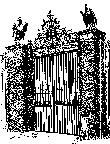 |
|
|
  Westover was built circa 1730 by William Byrd II, the founder of Richmond. It is noteworthy for its secret passages, magnificent gardens, and architectural details. The grounds and garden are open 9 a.m. to 6 p.m. daily, but the house is not open to the public. Westover was named for Henry West, fourth Lord Delaware and son of Thomas West, Governor of Virginia. The shady tulip poplars framing the building are more than 150 years old. "Ancient" is the best word to describe the boxwood hedges which enclose the lawn. The house is considered one of the most outstanding example of Georgian architecture in America. Of special notice is the unusually steepness of the roof, the tall chimneys in pairs at both ends. Another special touch is the elaborate doorway, which continues to be recognized as "the Westover doorway" despite its adaptation to many other buildings. The special charm of the house lies in its elegant yet extremely simple form and proportions, combined with its perfect setting in the landscape, the essence of the artistic ideals of its period adapted to the style of living in Colonial Virginia. The two wings were originally identical and not connected to the three-story central structure. The east wing, which once contained the famous Byrd library of more than 4,000 volumes, burned during the War Between the States. The present east wing was built about 1900, and both wings were connected to the main home at that time. |

